Happy Friday…the 13th. Every week, I also post about what's going on in the creator economy across social media. If you're interested in hearing more from me, let's connect on LinkedIn and Twitter.
Today’s Edition:
Podcast ad revenue is expected to hit $2 billion this year
Instagram introduces an NFT feature in Digital Collectibles
Unilever will no longer work with influencers under 16
Podcast Ad Revenue Is Expected To Hit $4 Billion By 2024
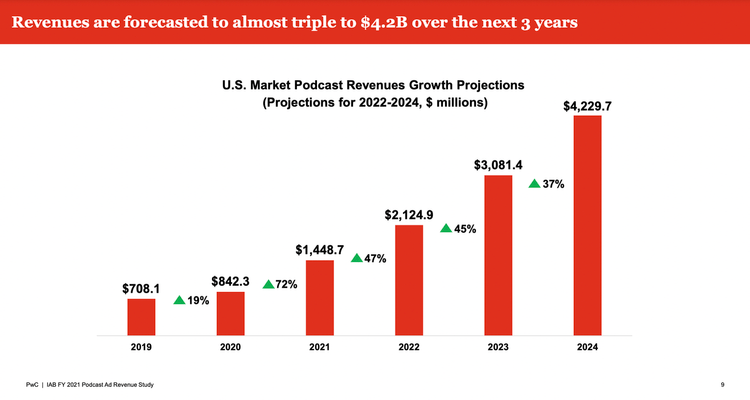
U.S. podcast advertising revenue is expected to hit $2 billion this year. According to the Interactive Advertising Bureau (IAB)’s sixth annual U.S. Podcast Advertising Revenue study, podcast ad revenue topped $1 billion for the first time in 2021 and is projected to reach $2 billion by the end of 2022 and more than $4 billion by 2024.
The study also reports that podcasts are the fastest-growing advertising channel. The podcast advertising market grew two times faster than the overall internet advertising market in 2021, increasing 72%. This growth is primarily due to increased podcast listeners and diverse content, more adoption of automated ad technology like Dynamic Ad Insertion (DAI), and increased advertising spending by existing and new advertisers.
DAI ads, which are inserted into a podcast episode after it has been recorded rather than edited-in or baked-in ads that are part of the recording of the episode, generated a significant amount of ad revenue. The majority of these ads, which tend to be host or announcer read, accounted for 84% of ad revenue, a significant increase from its 48% market share in 2019.
According to the study, host-read (55%) and announcer-read (40%) ads are the most popular ad formats, mid-roll ads (64%) are the most common ad placements, and more than half of the ad inventory sold is between 16 and 30 seconds long.
Podcasts are experiencing explosive growth, and they are likely to continue to do so as more advancements are made in brand safety tools, audience targeting, and measurement. As more influencers turn to podcasts to reach new audiences, advertisers will have more shows to choose from, which will make podcast advertising more accessible to brands of all sizes and verticals.
Currently, brands rely heavily on Instagram, TikTok, and YouTube for their influencer marketing campaigns, but I expect to see more brands incorporate podcasts into their campaigns, especially since there is a demand for more influencer-hosted shows. Partnering with podcasters on ad-reads, branded segments, or even full episode sponsorship can help brands reach an engaged audience that is fairly open to learning about the products or services their favorite podcasters endorse.
Industry News
Instagram introduced support for NFTs. Earlier this week, Instagram launched its new NFT feature, Digital Collectibles, with select U.S.-based creators and collectors such as Blue The Great, Gary Vee, Paige Bueckers, Jaden Smith, and Sophia Wilson.
With Digital Collectibles, creators and collectors can connect third-party wallets like MetaMask, TrustWallet, and Rainbow and share NFTs created on the Polygon and Ethereum blockchains, to the Feed, Stories, and Messages. NFT posts will have a shimmer effect to stand out from other types of posts. Additionally, they have a Digital Collectibles label where users can tap to view information such as the NFT description, the creator, and the current owner.
Mark Zuckerberg, Meta's CEO, also discussed the company's plans to bring this functionality to Facebook and other apps in the Meta ecosystem and said it will soon begin alpha testing augmented reality NFTs through its Spark AR product.
The arrival of NFTs on Instagram coincides with a major drop in sales in the market. According to The Wall Street Journal, the number of NFTs sold daily has fallen by 92%, from 225,000 in September to 19,000 now. Even if the timing isn't ideal, Instagram's entry into NFTs could spur growth since it exposes NFTs to a broader, mainstream audience.
As of now, Digital Collectibles is limited as it is used only as a way for creators and collectors to showcase NFTs they have created or acquired, but Instagram will likely build out more functionality after a period of testing. Among the options would be an NFT marketplace where users could sell and purchase NFTs and NFT-backed subscriptions where creators could share exclusive content and access to owners of their NFTs.
With Twitter and now Instagram supporting NFTs, and YouTube and Reddit planning to follow, this heralds a wave of centralized companies bringing aspects of decentralization to their platform.
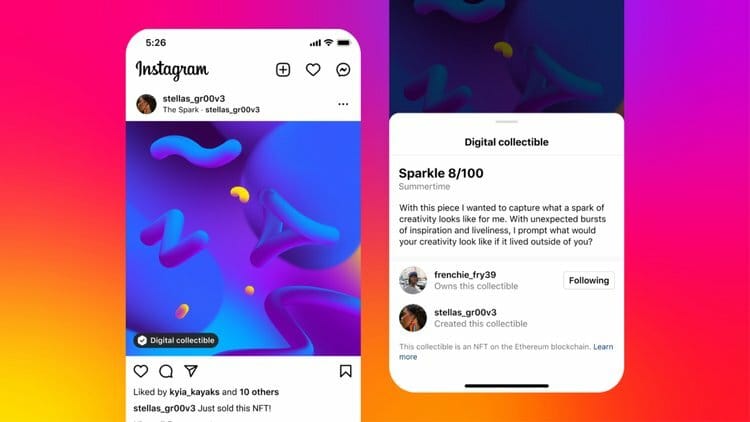
Unilever will no longer work with influencers under the age of 16. The massive CPG brand recently announced new policies for marketing food and beverage products to children. These policies include no longer marketing to children under the age of 16 across both traditional and digital media. Under the new policy, the company will no longer use influencers, celebrities, or ambassadors under 16 or who primarily appeal to children under 16. Brands within its portfolio are expected to comply with these policies by January 2023.
Most countries worldwide restrict marketing to children under 13 years old, so Unilever goes up and beyond with its new policies. Unilever takes a cautious approach to its marketing initiatives through its self-imposed restrictions, especially utilizing creators. With influencers driving much of today's culture, their potential negative impact on children, who are heavily influenced by social media, can be significant. Unilever's stance is clear-cut instead of taking an approach that blurs the line between ethical and not ethical. This will help cut down on any potential regulatory penalties and take a firm stand on a cause, which will likely impact the bottom line for relevant brands.
Unilever's latest move suggests a trend that will develop in the near future - companies setting restrictions on the types of creators they work with. The company's decision not to work with influencers, celebrities, or ambassadors under 16 or appeal to a young audience is primarily based on its general restrictions for marketing to children; however, it's similar to Ogilvy UK's ban on influencers who edit their faces or bodies in their photos. Although different in causes, we may start to see more companies take strong stances on the type of influencers they are willing to work with if they believe it will serve the greater good of society.
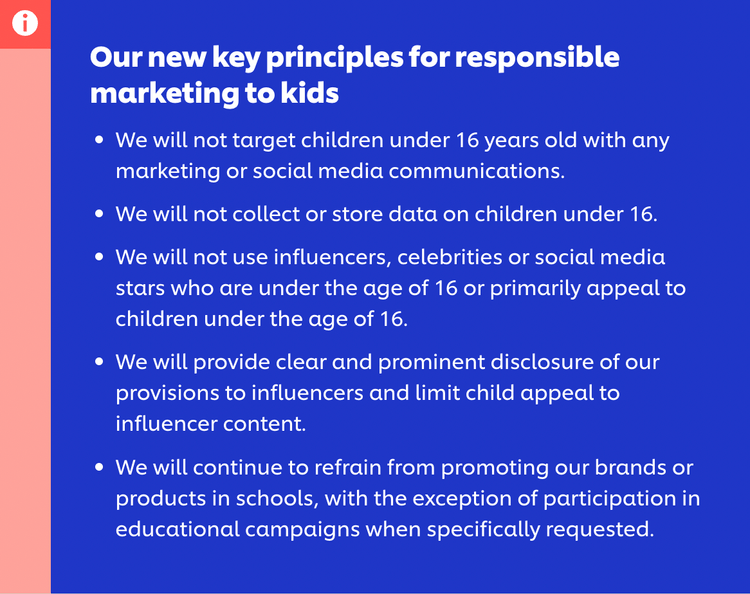
YouTube announced Green Screen for YouTube Shorts. The Google-owned platform is adding a new tool for its short-form video form: Green Screen. This tool allows creators to incorporate up to 60 seconds of any eligible video to create a new Shorts video. Shorts created using Green Screen will be attributed to the original creator's video with a link within the Shorts player.
Green Screen builds on the previously released Cut feature that lets creators select a 1-5 second segment for their Shorts content. Similarly, Green Screen empowers creators to remix existing video content to create new Shorts videos.
These types of features are quite popular on TikTok. They are often used by creators to reply to or react to trending videos. YouTube seems to be striving to create a similar experience for Shorts with the rollout of these features, making it easier for creators to start creating and sharing Shorts content.
As YouTube tests ads for Shorts, generating more content for ads to run along is key to building long-term advertising revenue.
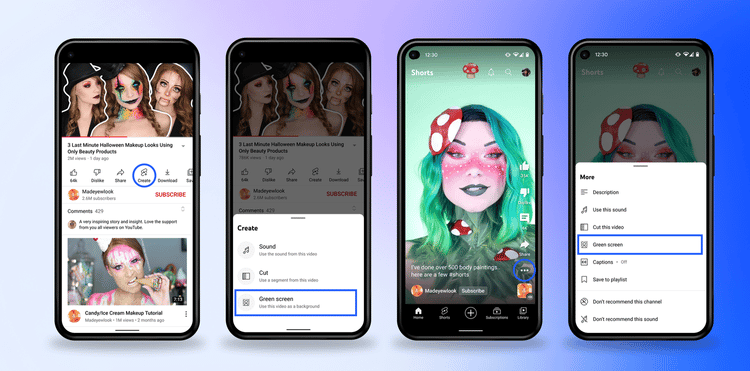
YouTube has begun testing Channel Memberships Gifting. After announcing the feature last year, YouTube has started to test a beta version of Channel Memberships Gifting with select creators. With Channel Memberships Gifting, existing channel members can purchase a set number of memberships (5, 10, or 20) during a live stream. YouTube will then distribute these to viewers, who opt-in, based on how much they interact with the channel. Gift recipients gain access to custom emojis, loyalty badges, and other exclusive channel membership perks for a month. YouTube and creators will split revenue 70/30, while gift-receiving viewers aren’t charged anything.
YouTube is taking a page out of Twitch's book with Channel Memberships Gifting, a version of Twitch’s Gift Subscriptions. Now, fans can financially support their favorite creators and share the benefits of being a paying subscriber with those who aren't currently channel members. In addition to providing creators with another means of monetizing, it also creates a community element for creator monetization, from which both creators and audiences can benefit.
Channel Memberships Gifting is one of the latest Twitch features that YouTube has added to its platform. Other examples include the ability for creators to create clips of their live streams and to re-direct their viewers to other channels. It took YouTube a few years to catch up with Twitch on certain functionality for streamers, but YouTube has made up ground in recent months. Creators are increasingly turning to YouTube for their live streaming efforts due to what seems like a marathon of new smart updates.
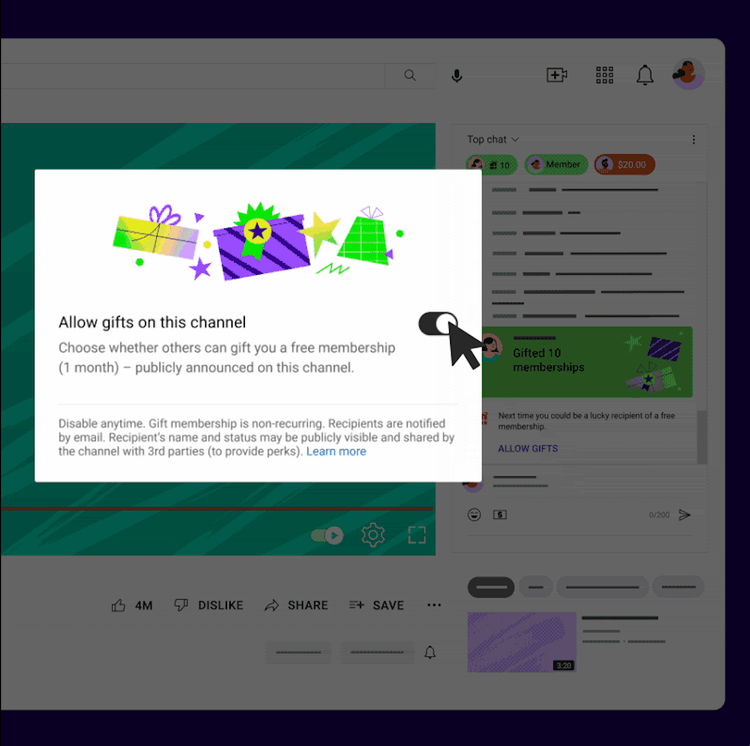
LinkedIn announced updates to content and search discovery. When users search for news, topics, or trends, they will now see posts from people they are connected with or following, as well as relevant creators, outside of their network. Along with this, users can see the latest insights, expert opinions, and other breaking news when they search for particular topics such as Web3. It’s also introducing a feature to help users re-discover posts they have previously seen on Feed, by enabling them to search for the creator's name and keywords in the post.
LinkedIn’s content and search discovery experience got an added boost. The updates make it easier for users to find the most relevant content across the platform, from breaking news to insights, experts, and thought leadership. Creators and brands benefit from this since their content now has greater reach, especially beyond the people they are already connected with or are following them. Brands and creators can improve the search visibility of their content if they share posts based on popular topics or use common keywords in their posts that users are likely to put in when searching for specific content.
LinkedIn follows in the steps of Reddit, which also recently updated its search experience to help users find particular discussions.

What I’m Reading
Clara, the latest ‘Glassdoor for influencers’ app, wants to even the playing field between brands and creators (Marketing Brew)
These young Black influencers eat, sleep and shoot videos at a mansion near Atlanta. Together they have 30 million followers (CNN Business)
TikTok is eating up rivals. Can it keep users hooked? (Wall Street Journal)
influencers over 40 encourage people of all ages to create if they want to (Daily Dot)
Elon Musk says Twitter deal "temporarily on hold (Axios)
